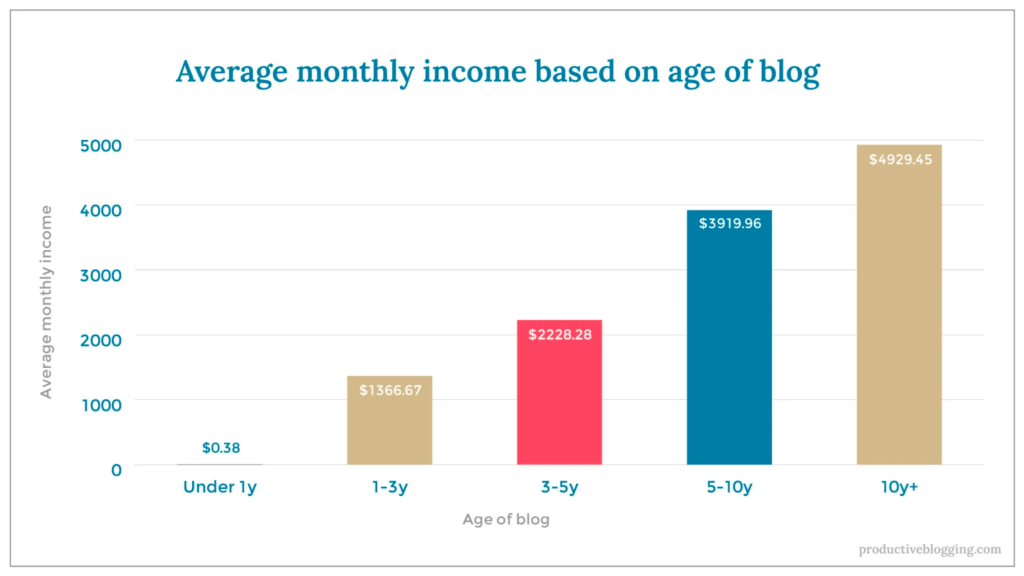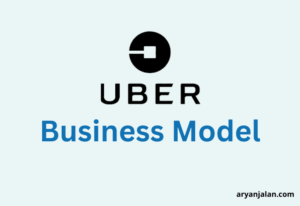Over the past decade, the travel blogging industry has grown exponentially, providing a compelling avenue for travel lovers to monetize travel blogs. Thanks to the increasing popularity of digital platforms and social media, travel content creation is no longer reserved only for travel professionals.
Anyone can share their travel experiences, insights, and expertise with a worldwide audience and, at the same time, monetize their content in different ways.
The number of people who require traditional travel content has increased as people search for personal travel and insights from travelers.
According to Thrive My Way: A majority of travel bloggers manage multiple blogs, accounting for 59%. The Internet facilitates approximately 80% of travel planning. The demand for travel blogs remains high due to the growing readership each year. Half of all bloggers generate profit from their blogging endeavors.
The ever-increasing demand has provided opportunities for travel bloggers like you to set up your brand name yourself and generate revenue from these online platforms.
To help you with that, we’ll share with you the details of how to monetize your travel blog and how much travel bloggers make money.
Let’s get started.
Do Travel Bloggers Make Money?
Before diving into how to monetize a travel blog, let’s address a common question: do travel bloggers make money? The answer is yes, they absolutely can. While not every travel blog will become a cash cow overnight, many successful bloggers have turned their passion for travel into a lucrative career.
Statistics show that many travel bloggers earn money through their blogs. The following graph illustrates the average monthly income relative to the age of each blog. On average, you can anticipate earning around $1,000 per month after one year of blogging. Some bloggers start earning within the first six months of their blogging journey and can transition into a full-time career within two years.

According to Nick Wharton of Goats on the Road, novice bloggers who commit to daily effort can potentially earn $500 per month within six months. By the end of the first year, earnings could reach $1,000 to $1,500 monthly. With consistent dedication over two to three years, generating $5,000 per month or higher is feasible. Nick earns between $15,000 and $35,000 monthly through affiliate marketing, advertisements, and partnerships with press agencies.
Here, we’ve compiled six income reports from travel bloggers of diverse backgrounds. These reports detail their monthly earnings, the age of their blogs, and their specific niches, providing a comprehensive view of the various earning opportunities available.
| Blog Name | Monthly Income | Blog Age | Niche |
| Living the Dream | $8,000 | 14 years old | Unique and unforgettable global travel adventures |
| By Leah Claire | $12,295.62 | 13 years old | Exploration of adventurous destinations worldwide |
| Amy Fillinger | $4,223.94 | ~4 years old | Journeys to tropical paradises like Hawaii |
| Adam Enfroy | $281,776 | 3 years old | Reviews of online money-making opportunities and software |
| Happily Ever Travels | $591 | ~4 years old | Living overseas, budget travel, and language learning experiences |
| The Atlas Heart | $6,598 | ~10 years old | Exploring California’s diverse landscapes and attractions |
Although It’s pretty hard to make money just by writing travel blogs, you must understand SEO and how it works. Here’s our detailed guide for SEO for travel bloggers.
Now that we’ve understood the various opportunities the travel blogging industry offers let’s dive into the actionable strategies to make money from a travel blog.
How to Monetize a Travel Blog
Monetizing a travel blog involves using multiple strategies and generating revenue from the content you create, and this is something I am saying with experience. I’ve worked with various bloggers over the last 4-5 years and found some of the best monetization strategies to help you make money from your travel blog.
Let’s now understand how to monetize a travel blog.
1. Advertising and sponsored content
One of the most common ways to monetize your travel blog is through advertising and sponsored content. This involves displaying ads on your website and partnering with brands to create sponsored posts or content that promotes different products or services.
1.1 Google AdSense and other ad networks
Google AdSense is one of the most used advertising platforms by bloggers. It helps you show relevant ads on your websites; you’ll get paid when readers click on these ads.
Other popular ad networks such as Mediavine, AdThrive, and Taboola offer an alternative way of advertising that provides better payouts or specialized ad formats designed for travel blogging niches.
1.2 Sponsored posts and partnerships with brands
Sponsored content means working with brands or companies to create promotional content. This content may have different formats, such as paid blog posts, product reviews, social media posts, or brand mentions.
This will help you to take advantage of their influence and reach by advertising brands, products, and destinations to their readers.
Note: Compensation for sponsored content can fluctuate based on factors like your reach, engagement statistics, the nature of the cooperation, and the brand’s marketing budget.
Remember, transparency is key. Always be upfront about your sponsored partnerships to build trust and uphold the integrity of our community.
For instance, travel blogger The Blonde Abroad frequently collaborates with brands to create sponsored content, showcasing products like travel gear, accommodations, and tour packages. Through these partnerships, The Blonde Abroad earns income and provides valuable exposure for the brands she works with.
2. Affiliate marketing
Affiliate marketing involves promoting products or services. It lets you earn a commission for any sales or referrals generated through your affiliate links.
Here’s how affiliate marketing works and how you can leverage it:
- Affiliate marketing is a commission-based model. You earn a percentage of the revenue from sales or actions taken through the unique affiliate links in your blog.
- You can partner with various companies and brands, including travel agencies, accommodation providers, tour operators, and gear manufacturers. Each may offer affiliate programs for you to join.
- When readers click on an affiliate link in your blog post and purchase or take a desirable action (like booking a hotel or buying travel gear), you receive a commission.
To choose the right affiliate products or services to promote. You can consider what matches your audience’s interests, preferences, and needs. For example, if your blog targets budget travelers, promote affordable accommodation options and travel gear that offer good value.
Maintain authenticity and credibility by only promoting products or services you have personally used and can genuinely recommend. This ensures your recommendations come from a place of trust and personal experience, fostering a stronger connection with your audience.
Nomadic Matt, a prominent travel blogger, uses affiliate marketing to recommend various travel resources and products. This helps him to earn commissions on sales generated through affiliate links on his blog.
3. Selling digital products
Selling digital products is a creative and efficient way to monetize your travel blog and provide value to your audience.
Here’s an in-depth exploration of various digital products that you can create and sell:
3.1 E-books, guides, and itineraries
Ebooks, guides, and itineraries are invaluable for travelers seeking detailed information and practical tips for their journeys. By sharing your personal experiences, you can offer content rich in travel tips, budget accommodations, unique tourist spots, and cultural insights.
These travel Ebooks can be sold on your blog or through third-party platforms like Amazon Kindle or Etsy, available in PDF or ebook formats. To add value, include bonus materials like printable packing lists, customizable itineraries, or discounts for services and attractions, making your guides indispensable for your audience.
For example, Nomadic Matt is one of the most well-known travel bloggers, building a highly successful brand around budget travel tips and advice. He has authored several best-selling books, including “How to Travel the World on $50 a Day,” which has become a go-to resource for budget travelers worldwide.
3.2 Photography presets/stock images writing workshops
If you are a passionate traveler and a great photographer, you can easily monetize both of your skills together.
Start with your images. Sell your beautiful landscapes, monuments, food, and cultural moments on platforms like Shutterstock, GettyImages, DepositPhotos, or your website. These photos are sought after by individuals, companies, and media outlets for use on their websites, in marketing materials, and publications.
Next, consider selling Lightroom presets. This is a great way to leverage your editing skills and can be done quickly from your site or through popular platforms like Etsy, Sellfy, FilterGrade, and Creative Market. It’s an excellent method to earn passive income while sharing your photographic style.
Lastly, extend your expertise through teaching. Offer workshops, training, or mentoring on photography covering composition, lighting, editing, and storytelling. You can also host writing workshops on narrative structure, descriptive language, and engaging content creation. This diversifies your income and enriches the community with your knowledge.
4. Offering Travel Consulting Services
You have the opportunity to leverage your expertise and passion for travel by offering a range of services to your audience. These services not only provide additional revenue streams. But also allows you to engage more deeply with your followers and contribute valuable insights and support.
Most passengers look for personalized help and guidance when planning travel, especially to unfamiliar destinations or complex itineraries. To help them, you can provide travel consultancy services or pre-arranged trip-planning packages. This can allow clients to get customized experiences based on their preferences, interests, and budget.
The consulting services can include personal meetings, itinerary reviews, destination recommendations, travel logistics help, and travel planning materials. You could write about various aspects like transportation options, accommodation, sightseeing tours, local cuisine, or cultural events.
The trip planning packages might include complete itinerary creation, booking assistance, activity reservations, budget management, and support during travel planning. You can also team up with customers to develop customized travel plans that satisfy their interests, timelines, and travel aims.
For example, Kiersten Rich, known as The Blonde Abroad, has cultivated a massive following with her vibrant photography and empowering travel content for female travelers. She has collaborated with numerous tourism boards, luxury brands, and travel companies, showcasing destinations and experiences around the globe.
5. Creating and selling merchandise
You can design and offer merchandise related to your brand and niche. With this, you can earn extra income and increase brand visibility. You can also create a sense of community among the audience.
Merchandise under your brand name includes t-shirts, hats, hoodies, and tote bags. They not only act as a source of income but also serve as an important wearable/usable reminder of your brand and thereby help in increasing your visibility.
By partnering with print-on-demand services like Printful.com, you can easily offer appealing merchandise without handling inventory or shipping. Design unique items, and these POD services take care of the rest.
Key Takeaways
- Success in travel blogging depends on producing top-quality content, reaching and engaging your audience, and utilizing different monetization strategies.
- The common ways to make money from travel blogs include advertising, sponsored content, affiliate marketing, selling digital products and merchandise, consulting, and workshop services.
- Developing a solid personal brand is crucial. Building a loyal follower base and staying updated with industry changes are also key. Together, these factors ensure longevity and sustainability in the competitive travel blogging field.



